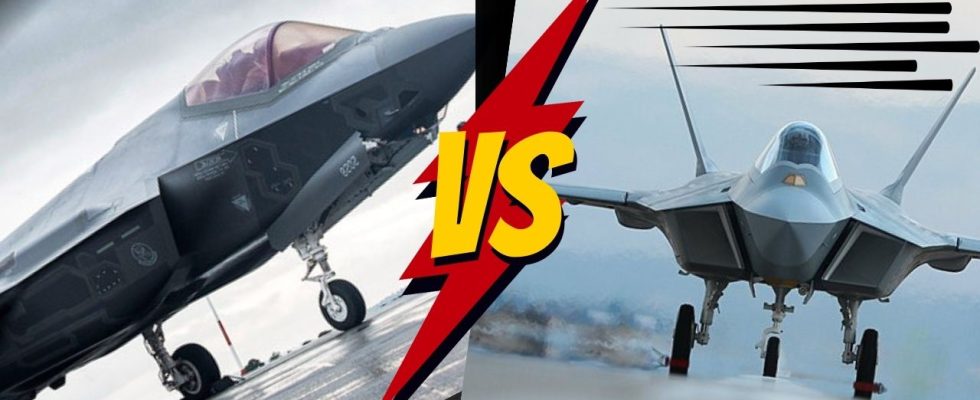One of Turkey’s domestic and national defense industry moves has recently completed its first test. National Combat Aircraft KAAN recently made its first test flight and took to the skies. After the flight, everyone questioned the dimensions of MMU KAAN. Because the plane is quite large compared to an F-35. So is this a design flaw or is this what it’s supposed to be? Here is the MMU KAAN design and details…
Is MMU KAAN bigger than F-35? Here is the MMU KAAN design!
National Combat Aircraft KAAN recently completed its first flight test. The aircraft, which received great acclaim after a successful take-off and landing, showed its full design for the first time. Among the first reactions: “Is it bigger than the F-35?”, “Isn’t it bigger than necessary?” There were expressions such as. So how true are these claims?
First of all, “Is MMU KAAN bigger or F-35 bigger?” Let’s start by answering the question. Yes, MMU KAAN is larger than F-35. We have prepared a table comparing both planes in terms of size for you. Here are the details of the table:
| Model | Length (meter) | Wingspan (meters) | Altitude (meters) |
|---|---|---|---|
| TAI MMU KAAN | 21 | 14 | 6 |
| F-35A | 15.67 | 10.67 | 4.57 |
| F-35B | 15.59 | 10.67 | 4.57 |
| F-35C | 15.67 | 13.11 | 4.72 |
As can be seen in the table, MMU KAAN is approximately 6 meters longer than the F-35A, B and C aircraft and its wingspan is between 1 and 4 meters larger. In terms of height, we can say that it is approximately 1.43 meters larger. Comments made here include “the plane was designed incorrectly” etc. towards. Regarding the issue, TAI’s design team states that all dimensions of the aircraft are within the required dimensions and that the aircraft has sufficient equipment in terms of radar.
So, is F-35 better or MMU KAAN? As an answer to this question, we have prepared a table for you. Here are the details of our table:
| Features | MMU KAAN | F-35A |
|---|---|---|
| Crew | one | one |
| Length | 21 meters (69 ft) | 15.7 meters (52 ft) |
| Height | 6 meters (20 ft) | 4.38 meters (14.4 ft) |
| wingspan | 14 meters (46 ft) | 10.7 meters (35 ft) |
| Power source | 2 × GE F110-GE-129 turbofans | 1 × Pratt & Whitney F135 turbofan |
| Thrust power (without afterburner) | 2 × 17,155 lbs-force (76 kN) | 28,000 lbs-force (125 kN) |
| Thrust power (with afterburner) | 2 × 29,400 lbs-force (131 kN) | 43,000 lbs-force (191 kN) |
| Maximum speed | Mach 1.8 (2,210 km/h) | 1.6+ Mach (1,932 km/h) |
| service ceiling | 55,000 feet (17,000 m) | 60,000 ft (18,288 m) |
| g limit | +9g / -3.5g | 9G |
| Avionics | ASELSAN AESA Radar, SAR, IRST, EOTS, DIRCM, Helmet Mounted Sight System | Advanced avionics systems |
| Internal fuel quantity | No information has been provided yet. | F-35A: 18,250 lb (8,280 kg) |
| Maximum Takeoff Weight | No information has been provided yet. | 31,751 kg (69,999 lb) |
| Battle radius | No information has been provided yet. | F-35A: 1,081 km (584 nautical miles) |
| Propellant/Weight ratio | No information has been provided yet. | A: 0.89 |
Table comparing the two aircraft in terms of avionics:
| Avionic Features | F-35A | MMU KAAN |
|---|---|---|
| Radar | Northrop Grumman AN/APG-81 AESA radar | ASELSAN’s domestic AESA Radar BÜRFİS |
| Electronic Warfare System | BAE Systems AN/ASQ-239 Barracuda | No information given. |
| Distributed Aperture System | Northrop Grumman/Raytheon AN/AAQ-37 DAS | – |
| Electro-Optical Targeting System | Lockheed Martin AN/AAQ-40 EOTS | TOYGUN (EOTS) |
| Communication, Positioning and Identification Team | Northrop Grumman AN/ASQ-242 CNI | – |
| Multifunction Advanced Data Link System | Harris Corporation MADL communication system | – |
| Synthetic Aperture Radar System | – | SAR (Synthetic Aperture Radar System) |
| Infrared Search and Track Sensor | CNI | IRST (KARAT) |
| Directed Infrared Countermeasure System | – | DIRCM (Lightning-300) |
| Helmet Mounted Sight System | – | Helmet Mounted Sight System |

